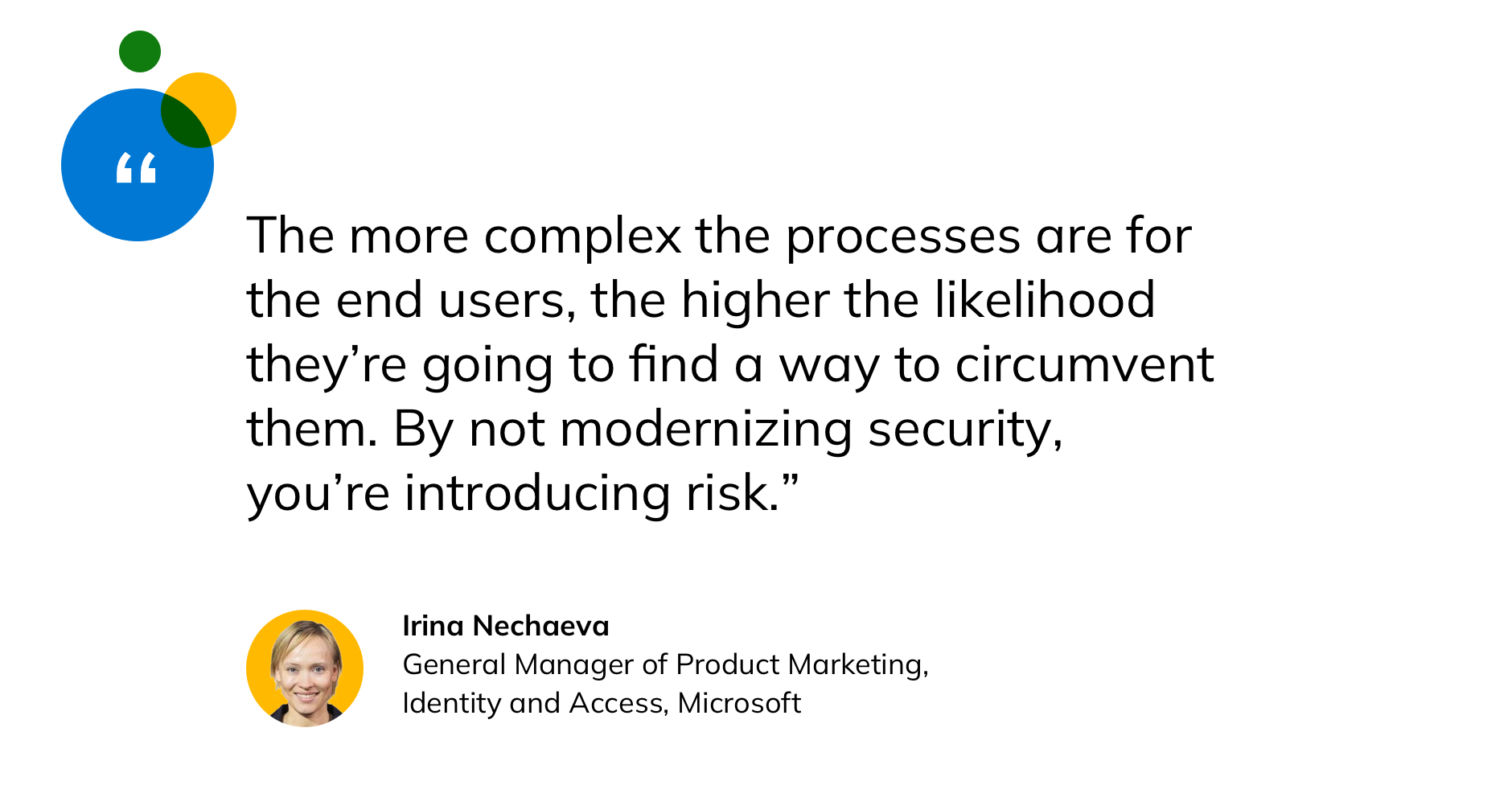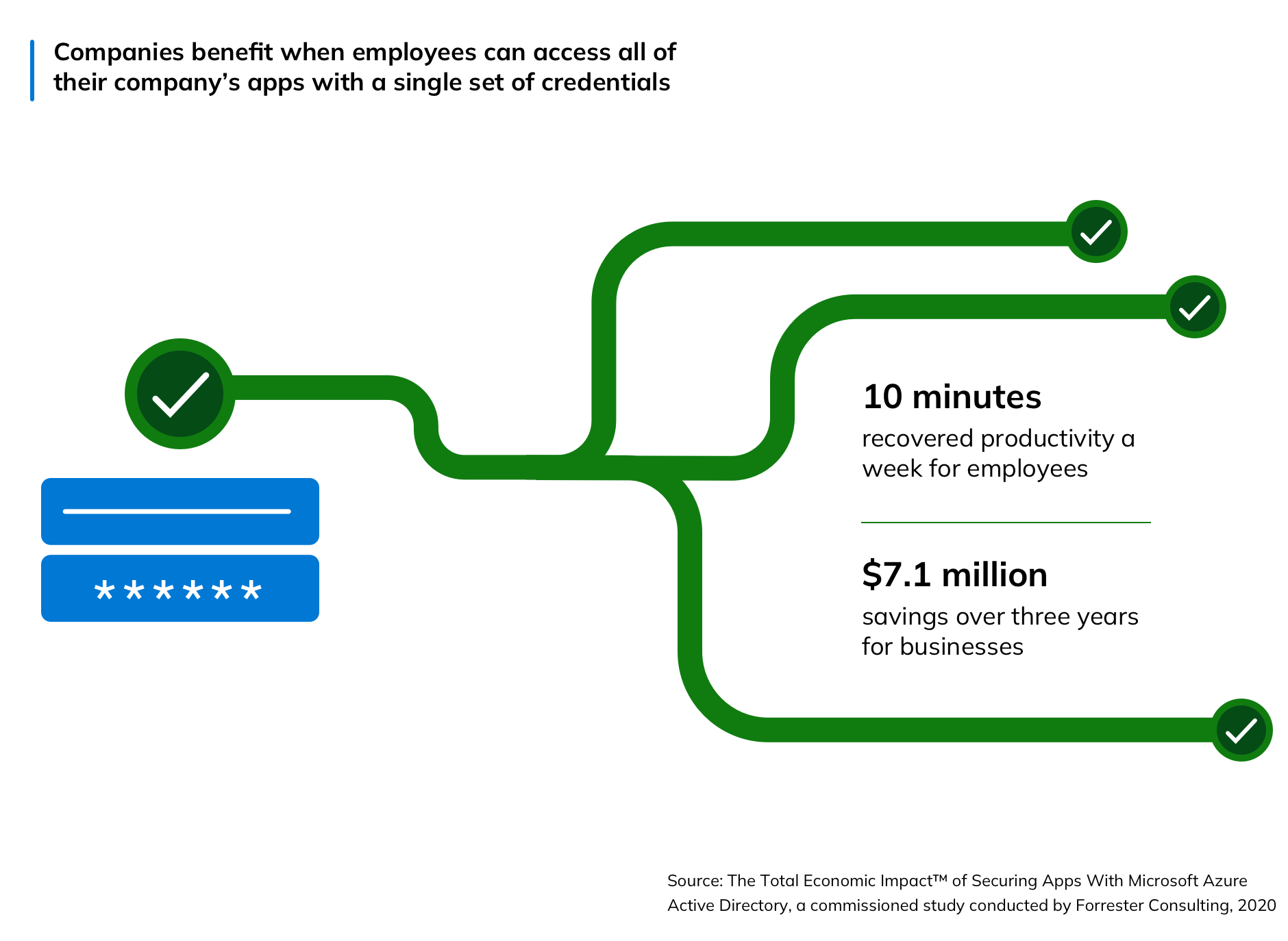What if Your Cybersecurity Strategy Could Make Your Workers More Productive?
By working together, security teams can improve employees’ work experience—and smooth the AI adoption journey
A forgotten password that renders a vital document inaccessible. A deadline narrowly missed because an employee spent precious time troubleshooting with IT to gain access to a critical presentation. Crucial meetings become hindered by sluggish VPN connections—a common issue when depending on outdated network access tools like traditional VPNs.
While business leaders look to emerging technologies like collaboration apps, workflow tools and generative AI to boost productivity, many overlook the pivotal role that security plays in shaping the employee experience, particularly for hybrid workers, says Irina Nechaeva, General Manager of Product Marketing, Identity and Access at Microsoft.
As organizations rapidly adopt newer technologies, many still rely, at least partly, on security solutions built for the pre-cloud, pre-hybrid era. Often, the larger a company’s digital footprint becomes, the more it depends on a patchwork of on-premises and cloud-native network access and identity management solutions—from multifactor authentication and risk-based access controls to firewalls and VPNs—that are rarely integrated.
Although these tools play a critical role in making access decisions and protecting the business, the teams that manage them also tend to work independently, without collaborating.
This fragmented security environment typically results in employees having to navigate cumbersome processes to access the resources and applications they need to do their jobs, which in turn can motivate them to cut corners—whether by reusing passwords or forwarding sensitive data to personal accounts with less stringent security controls.

Promoting productivity with better security
The challenge for security leaders is to implement a framework that protects all of a company’s applications and resources—whether in the cloud or on-premises—while eliminating friction for employees. The answer, says Nechaeva, is a single, unified solution that smoothly secures workers’ access, regardless of where a resource or user is located.
Achieving a frictionless security stance requires organizations to think beyond simply modernizing their identity and network security solutions, which does little to improve communication between identity and network access teams, says Nechaeva. Instead, she advises security leaders to adopt a holistic solution that secures access to every resource across the entire organization while also guaranteeing easy access for a dispersed workforce.
An example of an all-encompassing security solution is Microsoft Entra, which provides comprehensive protection with conditional access—a pivotal capability that allows security teams to collaborate and easily manage granular identity and network access policies in one place. This overarching view on access policy across all users and all resources makes it easier for security teams to safeguard the connection between an employee and the resource they are trying to access, whether the user is signing in from their desktop or an airport lounge half a world away.
Such a unified access policy engine like Conditional access in Microsoft Entra is enabled by the convergence of Microsoft Entra ID with Microsoft’s security service edge solution, which includes two offerings—Microsoft Entra Internet Access and Microsoft Entra Private Access. Private Access delivers identity-centric Zero Trust Network Access (ZTNA) to all of an organization’s private applications and resources—from file transfer protocol to remote desktops—with simplified security policies that can be customized to verify the user, the health of their device and their network. Internet Access, on the other hand, offers security professionals an identity-centric secure web gateway to protect access to all internet resources, as well as Microsoft 365 and third-party SaaS apps. Working in concert, products in Microsoft Entra portfolio help teams eliminate gaps in defenses and reduce operational complexities, ultimately benefiting employees.
An improved employee experience
By unifying identity and network access policies under a single umbrella, Microsoft Entra promotes collaboration between traditionally siloed teams, which translates into a more holistic view of how security impacts the employee experience.
For example, integrating security for on-premises and internet resources, as well as converging identity and network access under a single solution, means that users don’t need to provide separate credentials each time they access a different application. Eliminating the need to repeatedly verify their identity throughout the day frees up employees for more important work tasks, amounting to a significant cost savings for companies.

Built on Microsoft’s global private network—one of the largest private networks in the world—Microsoft Entra’s security service edge solution also addresses another challenge that regularly impacts productivity for remote workers: inconsistent connectivity.
Operating across 60 regions, the global private network connects organizations to one of over 190 points of presence—or network connection points—ensuring faster connectivity for hybrid workers, who can bypass the public internet as they’re routed to their organizations’ apps and resources.
Slow internet speeds could have a sizable impact on companies doing business in different parts of the world, potentially preventing an executive from downloading an important presentation, or rendering a vital team member unreachable at a critical time.
“There are countries where things break every week and literally half of websites won’t load,” says Nechaeva. “Employees working in those regions feel a massive difference with how everything loads when they leverage Microsoft’s global infrastructure.”

Malware and viruses can also slow down internet speeds and computer performance, making even mundane tasks prohibitively time-consuming for employees. By leveraging Microsoft Internet Access capabilities like web content filtering and cloud firewalls, IT teams can keep operating systems running smoothly while also safeguarding workers from accidentally falling victim to costly threats like ransomware, token theft and data exfiltration.
As more organizations adopt AI at scale, CEOs and security experts alike are anxious about the impact the emerging technology will have on data breaches. According to the Information Security Media Group, 80% of business leaders cite leakage of sensitive data as their top worry when it comes to AI.
To prevent such a breach, it’s more critical than ever for organizations to implement both identity and network security solutions with preventive guardrails robust enough to keep data from leaving the network. Microsoft Entra helps security teams keep a firm grip on company data through tighter access controls of who can enter the network, and protections that ensure once in the network, users can only access the apps and resources necessary for them to do their jobs, thereby limiting data theft even if a breach is successful.
“The age of AI is already presenting new security risks for business leaders,” says Nechaeva. “To rise to the challenges of this evolving technology, security needs solutions that stay ahead of technological transformation, without sacrificing user experience.”
To learn more, visit Microsoft Entra Internet Access and Microsoft Entra Private Access.
